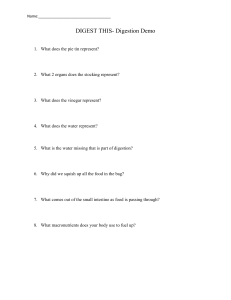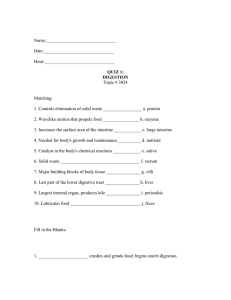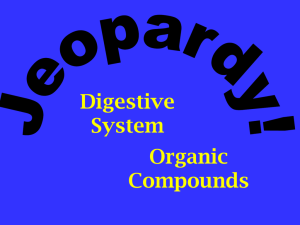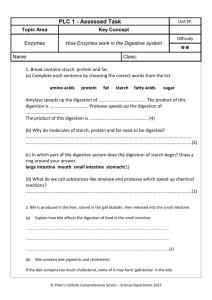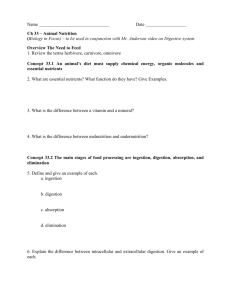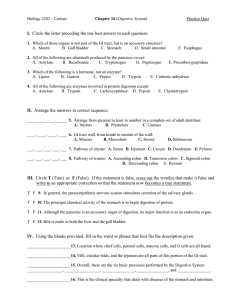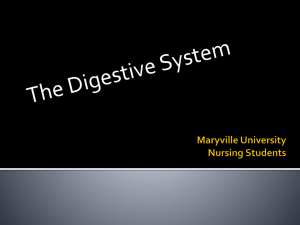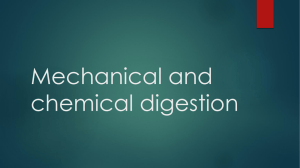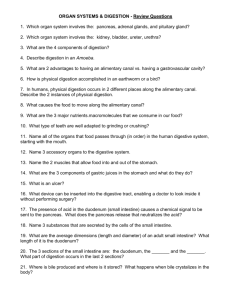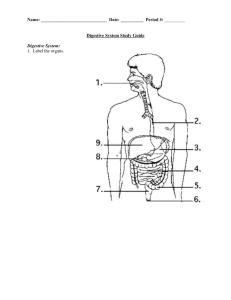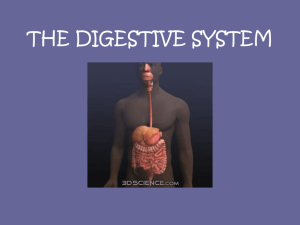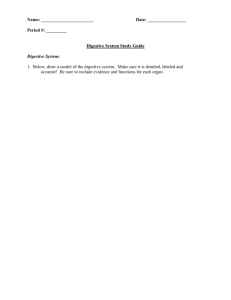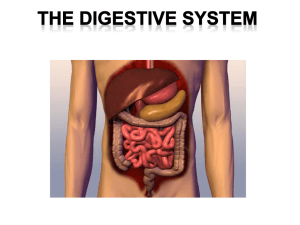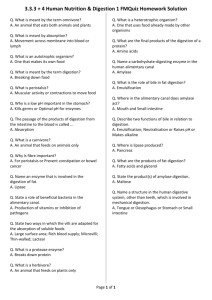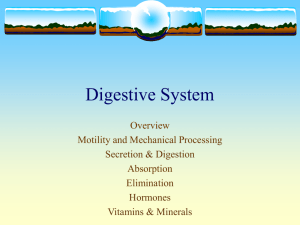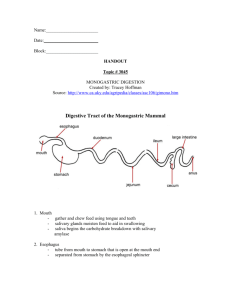Digestion study guide
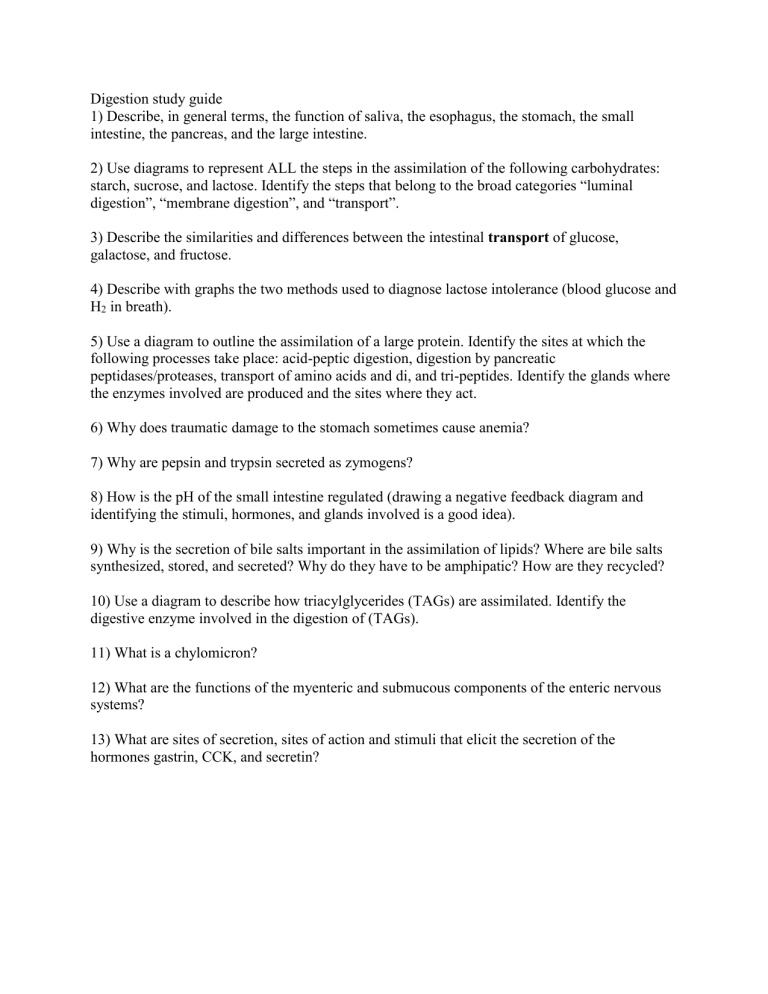
Digestion study guide
1) Describe, in general terms, the function of saliva, the esophagus, the stomach, the small intestine, the pancreas, and the large intestine.
2) Use diagrams to represent ALL the steps in the assimilation of the following carbohydrates: starch, sucrose, and lactose. Identify the steps that belong to the broad categories “luminal digestion”, “membrane digestion”, and “transport”.
3) Describe the similarities and differences between the intestinal transport of glucose, galactose, and fructose.
4) Describe with graphs the two methods used to diagnose lactose intolerance (blood glucose and
H
2
in breath).
5) Use a diagram to outline the assimilation of a large protein. Identify the sites at which the following processes take place: acid-peptic digestion, digestion by pancreatic peptidases/proteases, transport of amino acids and di, and tri-peptides. Identify the glands where the enzymes involved are produced and the sites where they act.
6) Why does traumatic damage to the stomach sometimes cause anemia?
7) Why are pepsin and trypsin secreted as zymogens?
8) How is the pH of the small intestine regulated (drawing a negative feedback diagram and identifying the stimuli, hormones, and glands involved is a good idea).
9) Why is the secretion of bile salts important in the assimilation of lipids? Where are bile salts synthesized, stored, and secreted? Why do they have to be amphipatic? How are they recycled?
10) Use a diagram to describe how triacylglycerides (TAGs) are assimilated. Identify the digestive enzyme involved in the digestion of (TAGs).
11) What is a chylomicron?
12) What are the functions of the myenteric and submucous components of the enteric nervous systems?
13) What are sites of secretion, sites of action and stimuli that elicit the secretion of the hormones gastrin, CCK, and secretin?

